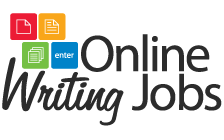
Photo by Sabrina Campagna (Flickr)
When you sit down to create any new piece of prose, one of the things you’ll need to consider before you start typing or scribbling is what point of view you’ll use. What perspective should you tell this story from, and which pronouns will you then be using throughout the piece? Your decision will have a major impact on the reader’s experience with your writing. First, let’s consider the options.
It’s All About Me:
First-Person Point of View
When something is written in the first-person point of view, the words are all coming from one specific narrator and that person’s perspective. Pieces written in first-person, such as blog posts or journal entries, are personal, coming from one person’s experience and discussing what that person sees, thinks, or knows. This is where you’ll find frequent use of the words “I” and “me.” A novel can be written in first-person, too, of course, and this perspective both limits the information you can parcel out to the reader (if the narrator doesn’t see it or hear it, the reader can’t, either) and can make the reader feel more of a connection with the main character, since they’re reading this person’s thoughts and opinions in their own words. But first-person writing doesn’t always have to be so personal: It can be professional as well, like the words in an advertisement or on a company’s website telling you that “we have the lowest prices” or “check out our great selection.”
He Said, She Said: Third-Person Point of View
The third-person point of view is sort of the opposite of first-person: While that was all about “me,” this one’s all about “them.” This perspective is used in educational writing and other more formal works of prose, though it can work well in novels also. It’s a little easier to write from this point of view for some authors, as you’re not limited in what you can tell the writer by what the narrator knows. The third-person point of view comes in two main types: limited and omniscient. In limited third-person writing, you can only relay the thoughts of one character; you’re only in one person’s head. In this way, it’s actually a lot like first-person writing except for the change in pronouns. However, in omniscient third-person writing, you know everything: You can tell the readers what any or all of the characters are thinking, jumping from the mind of one character to the next as you wish.
Wait … First, Third … What About Second?
What is the second-person point of view, then? Is there such a thing? You wouldn’t know it from the English classes you took in school or from reading almost anything you’ll find at the library, but the answer is yes. The second-person point of view is an odd one, though: It uses the pronoun “you” to speak directly to the reader. It’s quite tricky to employ the second-person point of view in a way that sounds normal and natural and keep it going throughout a novel-length text, but if done well, it can help really pull the reader into the story, forcing them to put themselves into the story as the main character. A good example of a novel written in the second-person point of view is Bright Lights, Big City by Jay McInerney. There’s also a whole series written in second-person that most people are familiar with: the Choose Your Own Adventure books.
So Which Point of View Should I Use?
Out of the three points of view you can use for your writing, you should probably eliminate second-person point of view right away: It’s just too quirky, too difficult to use in a way that sounds natural and not like some sort of gimmick. As for the others, your choice really depends on what feels right for the story you’re trying to tell. Is this one character’s story, or is it more focused on the setting and events than one particular person? Do you want the reader to feel very close to the main character? Or do you want to be able to stand back and editorialize a bit about what’s unfolding every once in a while? If you can’t decide, try just picking a point of view and writing a chapter or two, then go back and read what you’ve written to see if it sounds right. You might even write a few chapters in one point of view, then switch to a different one for a bit, and then compare to see which sounds best. Just remember to go back and make the point of view consistent later on, when you’re revising your first draft.
